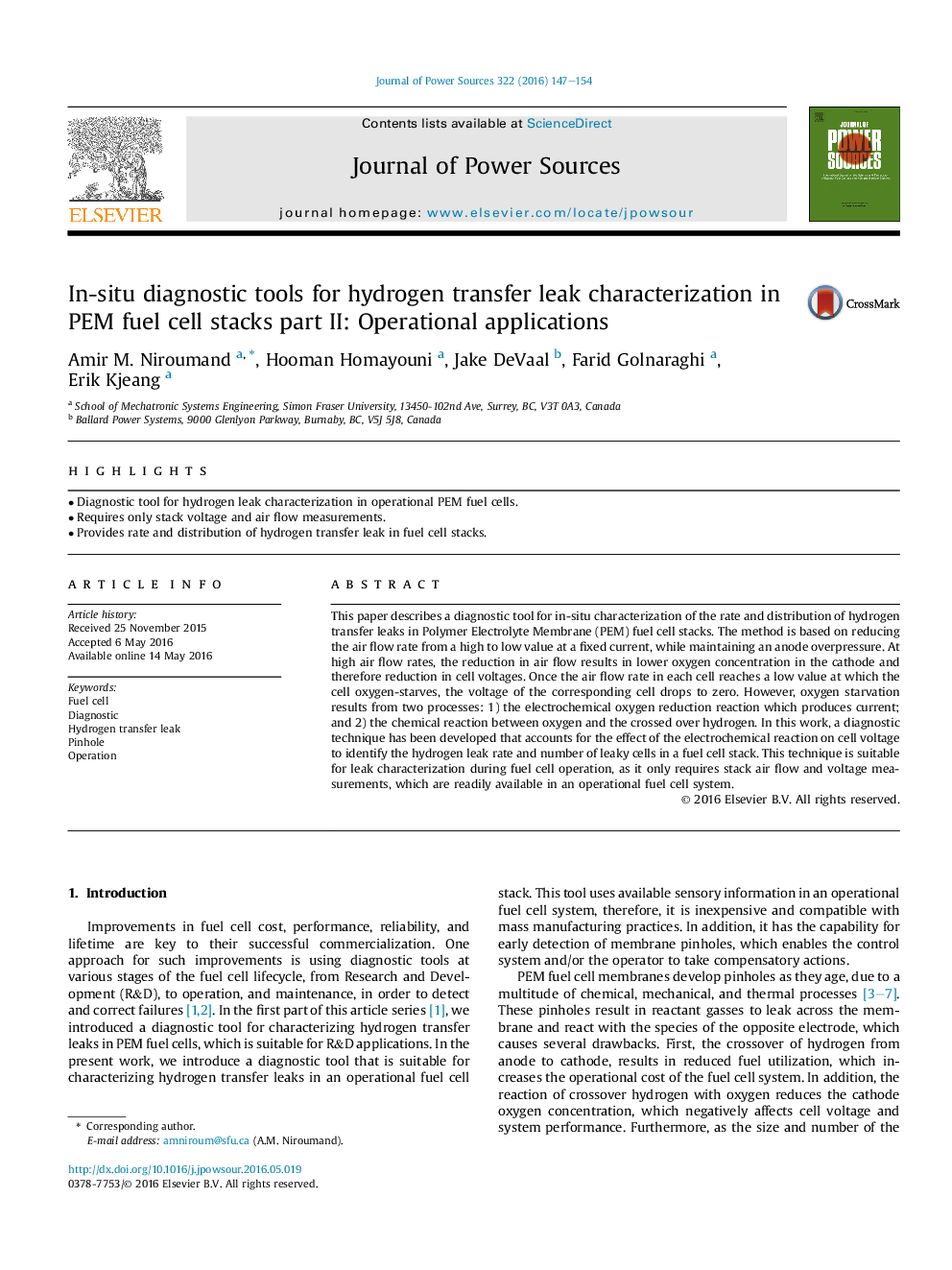| Article ID | Journal | Published Year | Pages | File Type |
|---|---|---|---|---|
| 1283574 | Journal of Power Sources | 2016 | 8 Pages |
Abstract
This paper describes a diagnostic tool for in-situ characterization of the rate and distribution of hydrogen transfer leaks in Polymer Electrolyte Membrane (PEM) fuel cell stacks. The method is based on reducing the air flow rate from a high to low value at a fixed current, while maintaining an anode overpressure. At high air flow rates, the reduction in air flow results in lower oxygen concentration in the cathode and therefore reduction in cell voltages. Once the air flow rate in each cell reaches a low value at which the cell oxygen-starves, the voltage of the corresponding cell drops to zero. However, oxygen starvation results from two processes: 1) the electrochemical oxygen reduction reaction which produces current; and 2) the chemical reaction between oxygen and the crossed over hydrogen. In this work, a diagnostic technique has been developed that accounts for the effect of the electrochemical reaction on cell voltage to identify the hydrogen leak rate and number of leaky cells in a fuel cell stack. This technique is suitable for leak characterization during fuel cell operation, as it only requires stack air flow and voltage measurements, which are readily available in an operational fuel cell system.
Keywords
Related Topics
Physical Sciences and Engineering
Chemistry
Electrochemistry
Authors
Amir M. Niroumand, Hooman Homayouni, Jake DeVaal, Farid Golnaraghi, Erik Kjeang,
